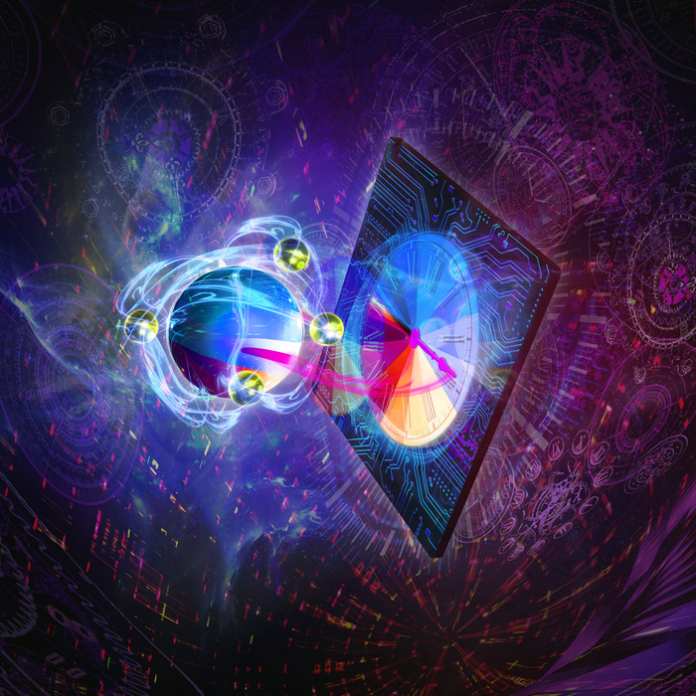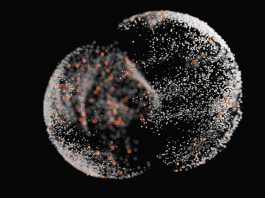A research team from the University of Innsbruck has developed a new concept that can be utilised to operate quantum sensors with even greater precision.
Atomic clocks are the most efficient sensors mankind has ever developed. Currently, they can be discovered in national standard institutes, or in the satellites of navigation systems. Scientists worldwide intend to further optimise the precision of these clocks. This includes a research group, led by Peter Zoller, a theorist from Innsbruck, Austria, who has developed a new concept that can be utilised to operate quantum sensors with even greater precision irrespective of which technical platform is used to make the sensor.
“We answer the question of how precise a sensor can be with existing control capabilities and give a recipe for how this can be achieved,” explained Denis Vasilyev and Raphael Kaubrügger from Peter Zoller’s group at the Institute of Quantum Optics and Quantum Information at the Austrian Academy of Sciences in Innsbruck.
How did scientists develop quantum sensors?
Physicists employed a method from quantum information processing. The variational quantum algorithm describes a circuit of quantum gates that depends on free parameters. Through optimisation routines, the quantum sensor autonomously discovers the best settings for an optimal result.
“We applied this technique to a problem from metrology – the science of measurement,” said Vasilyev and Kaubrügger. “This is exciting because historically advances in atomic physics were motivated by metrology, and in turn quantum information processing emerged from that. So, we’ve come full circle here,” added Peter Zoller. Thus, with this new approach, scientists can optimise quantum sensors to the point where they achieve the best possible precision that is theoretically permitted.
It has been noted within the scientific community that atomic clocks could run even more accurately by exploiting quantum mechanical entanglement. However, there has been a lack of approaches to realise robust entanglement for such applications.
Scientists are now employing a tailor-made entanglement that is precisely tuned to real-world requirements. With this method, they generate the combination consisting of the optimal quantum state and measurements required for each individual quantum sensor.
This allows the precision of the sensor to be brought close to optimum conditions, made possible according to the laws of nature, with only a slight increase in overhead. “In the development of quantum computers, we have learned to create tailored entangled states,” noted Christian Marciniak from the Department of Experimental Physics at the University of Innsbruck. “We are now using this knowledge to build better sensors.”
What are the benefits of this technology?
This theoretical concept was now implemented in practice for the first time at the University of Innsbruck, as reported by leaders of the study, Thomas Monz and Rainer Blatt.
The physicists performed frequency measurements based on variational quantum calculations on their ion trap quantum computer. Because the interactions used in linear ion traps are still relatively easy to simulate on classical computers, the theory colleagues were able to check the necessary parameters on a supercomputer at the University of Innsbruck.
Although the experimental setup is by no means perfect, the results agree surprisingly well with the theoretically predicted values. Since such simulations are not feasible for all quantum sensors, the scientists demonstrated a second approach: they utilised methods to automatically optimise the parameters without prior knowledge.
“Similar to machine learning, the programmable quantum computer finds its optimal mode autonomously as a high-precision sensor,” said Experimental Physicist Thomas Feldker.
“Our concept makes it possible to demonstrate the advantage of quantum technologies over classical computers on a problem of practical relevance,” concluded Zoller. “We have demonstrated a crucial component of quantum-enhanced atomic clocks with our variational Ramsey interferometry.
“Running this in a dedicated atomic clock is the next step. What has so far only been shown for calculations of questionable practical relevance could now be demonstrated with a programmable quantum sensor in the near future – quantum advantage.”
The research was financially supported by the Austrian Science Fund FWF, the Research Promotion Agency FFG, the European Union within the framework of the Quantum Flagship, and the Federation of Austrian Industries Tyrol, among others. The results have been published in the journals Nature and Physical Review X.
To keep up to date with our content, subscribe for updates on our digital publication and newsletter.









